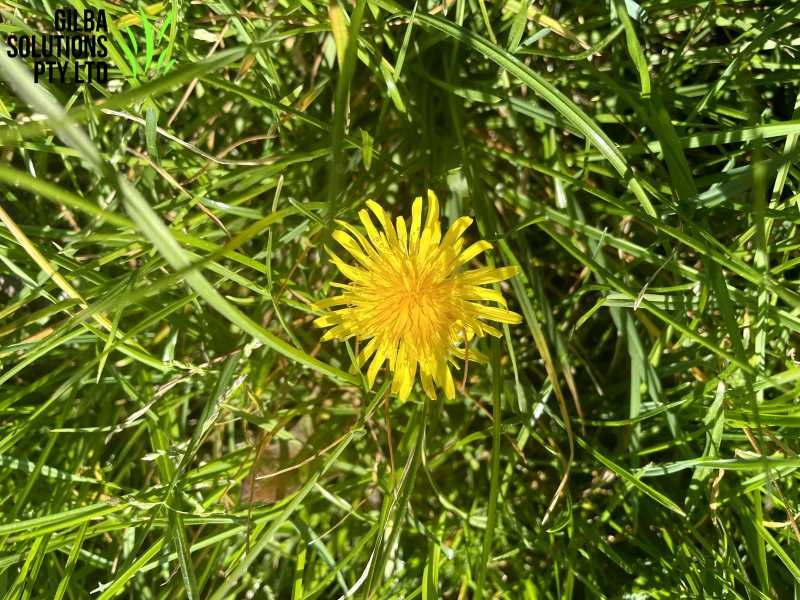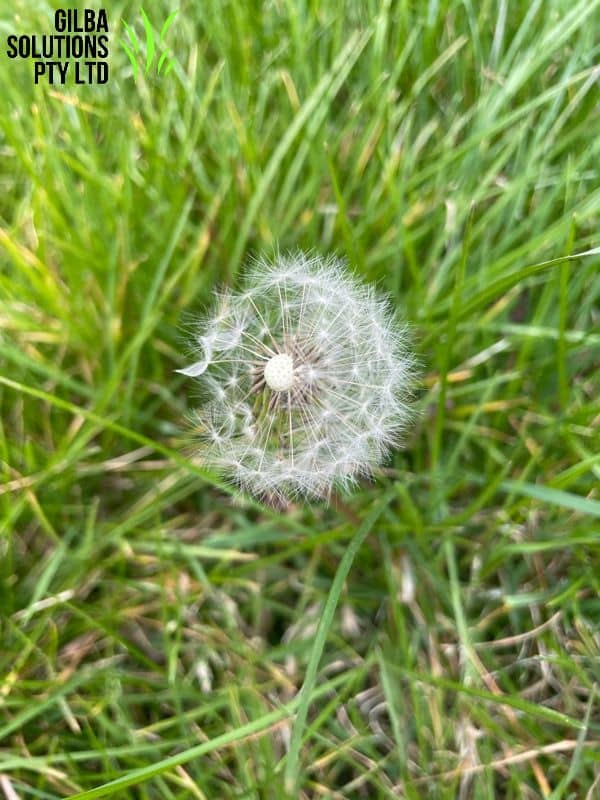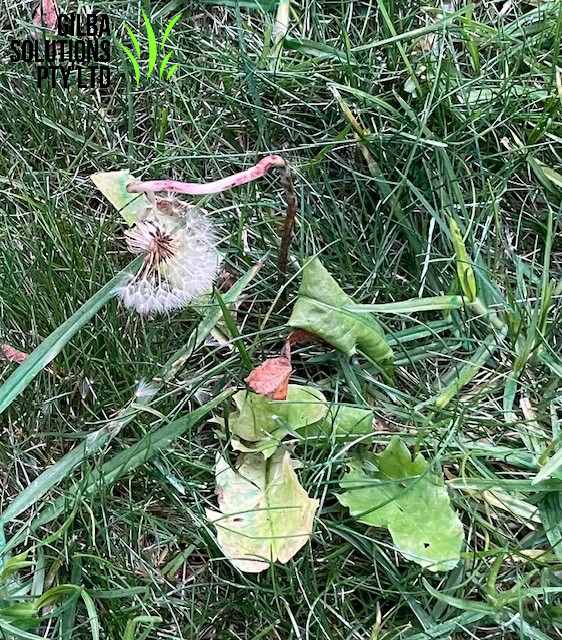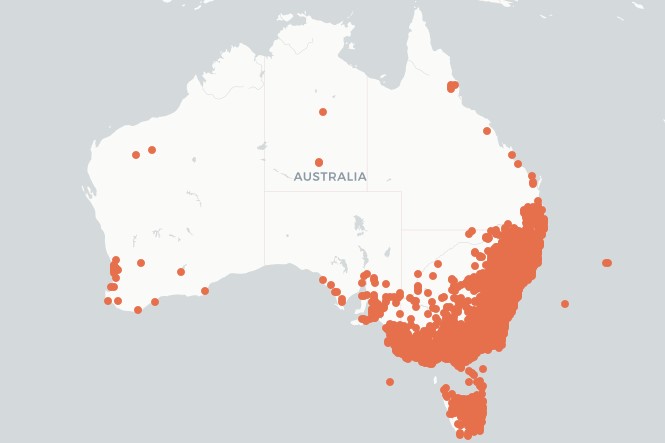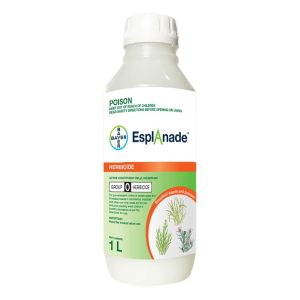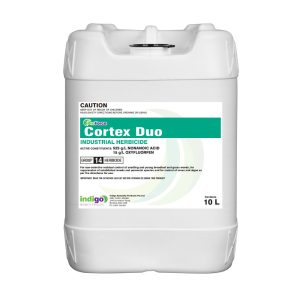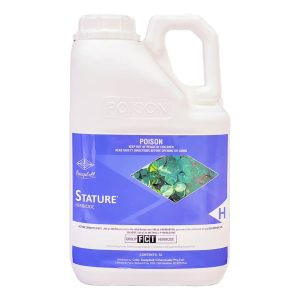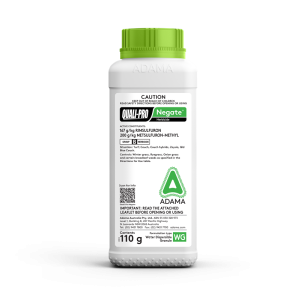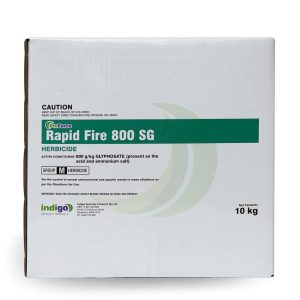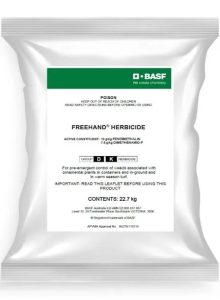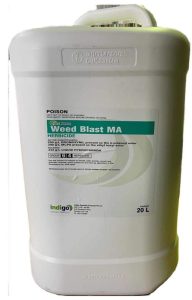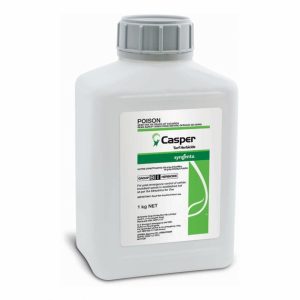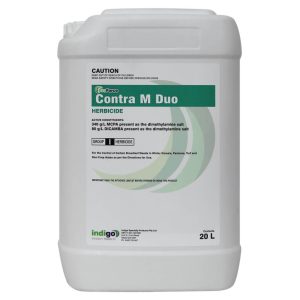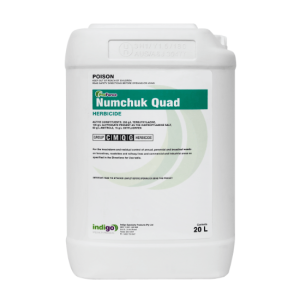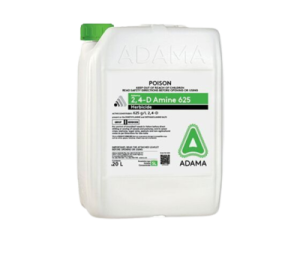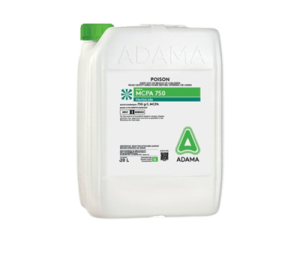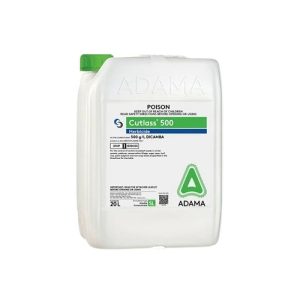How to ID and Kill Dandelions (Taraxacum officinale).
Dandelion (Taraxacum officinale) is a weed that thrives in temperate regions and is found on playing fields, gardens, and lawns. It is common in cool, high rainfall areas, and is a perennial weed that has yellow flower heads. These turn into fluffy white balls and disperse in the wind.
Once you read this, you will be able to:
- Identify the Dandelion plant (Taraxacum officinale).
- Know its habitat.
- Know the best ways to control it.
Why is Dandelion a Weed?
In Australia, it is an environmental weed. This is because
- In turf, it tends to be an eye sore.
- It is difficult to kill.
- This is a very competitive weed in droughts due to its deep taproot.
- It is frost and shade tolerant.
- It produces large numbers of seeds..
- The seeds have no dormancy period.
People often use the leaves, stems, flowers, and roots for medical purposes.
Dandelion is a good indicator weed of low Ca and high K soils.
For more information on common turf grass weeds check out ourweed ID chart.
The distribution map is courtesy of The Atlas of Living Australia.
Weeds Similar to Dandelion.
- It is often mistaken for weeds such as Catsear, and Hawksbeard.
- In its vegetative stages it is often mistaken for Capeweed or Sowthistles.
- All these weeds grow as rosettes, and have upright flower stems topped with yellow flowers.
- Catsear has hairy leaves.
- The leaves of Dandelion and Hawksbeard have almost no hairs.
- Catsear and Hawksbeard have branched flower stems whereas Dandelion flower stems have no branches.
Plant | Rosette | Annual or Perennial | Stems | Leaves | Flower Colour | Comments |
Dandelion | Yes | Perennial | Single unbranched and hollow. Leafless or have minimal leaves. | Deeply toothed or lobed (point backwards). | Single Yellow flower per stalk. Many small florets | When the stem or leaves are cut exudes sap. |
Sowthistle | Yes | Annual, biennial or perennial | Several branched, hollow stalks | Adult leaves are serrated and deeply lobed with a major triangle-shaped lobe at the leaf tip. | Yellow. Several flowers per stalk | Open up when the sun is out, and then close at night. |
Capeweed | Yes | Annual | Several branched with hollow core | Hairy undersides | Yellow with black centre | |
Catsear | Yes | Perennial | Multiple, branches. Leafless or have minimal leaves. | Club shaped and sometimes hairy | Yellow. Numerous tightly packed florets. | Catsear has milky sap in its stems and leaves. Needs sunlight for the flowers to open in the morning. Once open can't close for at least 3 hours. |
Gazania | Yes | Annual | Leafless | Hairless on the upper surface, woolly white hairy underneath. | Yellow | |
Fleabane | Yes | Annual, Biennial or short lived Perennial | Starts as a rosette. then grows tall, upright flower stems. | Elongated with bluntly toothed to deeply lobed margins. | Small tufted white daisy like flowers | |
Oriental Hawksbeard | Yes | Annual | Single leafy, branched main stem. | Hairy. Emit a milky sap | Yellow |
How to Identify Dandelions.
- Dandelion (Taraxacum officinale) is a perennial herb with a deep taproot.
- It has dark green spear shaped leaves.
- These lobed leaves have few to no hairs, and are 5 to 45 cm long.
- The lobes nearly always point backwards toward the crown of the plant, and look like the teeth of a pruning saw.
- The stems are either smooth or have a few short hairs.
- If you break the stem, it exudes a milky white sap, and the leaves are all basal.
- A single flower head is present on each stem.
How Do Dandelions Reproduce?
- Seed longevity: The seeds remain viable for over 5 years.
- Germination depth: The optimal germination depth is 2 cm.
- Seeds/head: The flower produces an average of 250 seeds per flower head.
- Seeds/plant: An individual plant produces up to 5,000 seeds.
You tend to see new Dandelion seedlings in the early to mid Summer. The seeds are grey to white, fluffy and have a ball shape. Wind spreads most of the seeds, and these germinate almost all the year-round.
Habitat: This weed prefers full sun and moist soils. But, once it establishes, it grows well in light shade and dry soils. It grow in lawns and gardens, playing fields, and waste places, and favours a soil pH > 7.0.
How to Remove Dandelion from your lawn.
Weed Calendar for Dandelion.
Management Calendar for Dandelion | ||||||||||||
Perennial. | ||||||||||||
Month | Jan | Feb | Mar | Apr | May | Jun | Jul | Aug | Sep | Oct | Nov | Dec |
Germination | ||||||||||||
Flowering | ||||||||||||
Pre emergent herbicide | ||||||||||||
Post emergent herbicide | ||||||||||||
Non Chemical Control of Dandelion.
- If Taraxacum officinale is not widespread, you can pull it out by hand. However, you must make sure that you remove all the root system to stop any regrowth.
- It tends to not reproduce vegetatively, but even if small root fragments are left behind these will grow into new plants.
How to Hand Pull Dandelions.
A step-by-step guide to hand remove Taraxacum.
- Wet or moisten the soil. This makes it easier to remove the taproot.
- Loosen the area around the base of the plant with a trowel or your hands.
- Once the soil is loose, grip the base of the plant and gently pull it upwards. Don’t yank on it. The aim is to remove the entire plant without any damage to the taproot.
- If it doesn’t come up easily continue to loosen the soil.
- Fill in the hole with loose soil and gently pack it down.
Other Options.
- Cut back on K fertiliser as this also helps manage this weed. If you do this, the grass outcompetes this weed for soil K. This means that if you limit K, the grass wins at the expense of the weed.
- Another non chemical way to control Taraxacum is to avoid the heavy use of lime or dolomite. Heavy use of these favours this weed as they increase the soil pH.
- Being a perennial, you cannot manage Taraxacum with regular lawn mowing.
- The seeds last up to 5 years in the soil.
- This weed will pop back up unless you use pre-emergents.
Chemical Control of Dandelion.
There are several turf herbicides that control Taraxacum officinale.
Pre-Emergents.
Apply pre-emergents in the Autumn or the late Winter before the seeds germinate.
Post Emergents for Dandelion (Taraxacum).
The best time for effective post emergent treatment is after you see the Dandelion flower. Ideally this is when it’s in the “puffball” stage. This tends to be in the early Spring or late Summer into the early Autumn, and is when the weeds are actively growing.
- 2,4-D
- Dicamba. Do not use on Buffalo.
- MCPA.
- Stature Herbicide. Not for Home use
- QualiPro Negate. Do not use on Buffalo Grass, and only use on warm season turf.
- Casper Herbicide. Do not use on Buffalo.
- ProForce Weed Blast MA. Safe on Buffalo.
- ProForce Contra M. Do not use on Buffalo.
Table of Post Emergents For Dandelion.
Product | Active | Chemical Group | Rate/Ha | Comments | ||||
2,4-D | 2,4-D | 4 | 1.8-3.2 | Wet foliage thoroughly. DO NOT mow lawn for 1 week before and at least 1 weed after application. DO NOT use on Buffalo grass (WA only). | ||||
Casper | Prosulfuron + Dicamba | 2 + 4 | 800g-1Kg | Apply from Autumn to Spring. Use high rates in cool months or if high weed pressure. Control takes 4 to 6 weeks. Use an NIS at a rate of 0.25 to 0.5% v/v. | ||||
Contra M. | Dicamba + MCPA | 4 | 6.5 L | Apply in 250-400L water. DO NOT use on Buffalo grass. After use do not mow for 2 days before or after application or fertilize within two weeks. | ||||
Dicamba | Dicamba | 4 | 1.2L + 3.2L of 2,4-D Amine 625g/L | Use a minimum of 1000L/Ha water. Do not spray on Buffalo or Bent Grass. | ||||
MCPA | MCPA | 4 | 930ml -1.8L | Apply in high volume to actively growing weeds. DO NOT mow for 2 days before application. Some transitory damage may occur to fine turf grasses | ||||
Negate. | Rimsulfuron + Metsulfuron-methyl | 2 | 110g | Apply to growing weeds and not to stressed weeds. | ||||
Stature | MCPA + Bromoxynil + Diflufenican | 4 + 6 + 12 | 2L | Apply to actively growing weeds. Complete control may take 4 to 6 weeks. A repeat application maybe needed in 4 – 6 weeks. Use a surfactant for difficult to wet weeds. Apply in 200 to 500 L of water. Transient discolouration may occur up to 21 days following application. | ||||
Weed Blast MA | Bromoxynil + MCPA | 6 + 4 | 3-6L | Apply in a minimum of 500L/Ha water. DO NOT mow for 2 days after treatment. | ||||
Warhead | MCPA + Clopyralid + Diflufenican | 4 + 12 | 5 L | You may see discolouration on kikuyu, carpet grass and Queensland blue. Avoid overlapping. Use an NIS. | ||||
Non Selective Control of Dandelion (Taraxacum).
- Glufosinate gives 4 to 6 weeks control. However, the plant will regrow due to the limited chemical movement.
- Glyphosate. You can use Glyphosate but if water quality is an issue then use ProForce Manta Ray.
The following are non-selective but also have a long term residual and stop any re-growth.
- Renegade. Renegade stops the germination of weeds for up to 12 months. This reduces the need for herbicide applications.
- Numchuk Quad. This gives good post and pre emergent control for up to 12 months
- Cortex Duo. Cortex Duo gives a rapid knockdown of Taraxacum, and residual control for up to 3 months. It is also safe to use near trees.
Table of Non Selectives For Dandelion.
Product | Active Ingredient | Group | Use Rate/Ha |
Glufosinate 200 | Glufosinate-ammonium | 10 | 1 to 6 L |
Rapid Fire 800 | Glyphosate | 9 | 0.9 to 1.35 Kg |
Numchuk Quad | Terbuthylazine + Glyphosate + Amitrole Oxyfluorfen | 5 + 9 + 34 + 14 | 20 to 25 L |
Cortex Duo | Nonanoic Acid + Oxyfluorfen | 14 | 7 L/1000L |
Renegade | Bromacil | 5 | 3.5 to 6.5 Kg |
In Conclusion.
The key to manage Dandelions is to adopt an integrated program. This involves both cultural and chemical methods.
The long term viability of its seed means that any program needs to take this into account. This weed will keep reoccur from seed whilst it remains viable, so you should seriously consider the use of pre-emergents.
How to kill dandelions in the Autumn
The most effective method to kill Dandelions in the Autumn, is to use a broadleaf herbicide specific for Dandelions. In the Autumn, Dandelions are transferring nutrients down into their roots to store for Winter which means it is a great time to target their root systems. In the Autumn, any Dandelion weed killer is more effectively absorbed and so kills the plant better than at other times of the year.
Key points for using Dandelion weed killers in the Autumn.
Choice of Dandelion weed killer:
When you buy a Dandelion weed killer Look for one that contains active ingredients like 2,4-D, Dicamba, or MCPA. These all work well against broadleaf weeds like Dandelions.
Application timing:
The best time to apply a Dandelion weed killer is in the late Summer or early Autumn when Dandelions actively move nutrients to their roots.
Spray method:
You will get the best results if you ensure that the herbicide reaches the foliage, so make sure you thoroughly cover the leaves of Dandelions.
Spot treatment:
If Dandelions are not widespread, simply spot-spray individual plants with a Dandelion weed killer rather than spraying the entire lawn.
What kills dandelions naturally?
There are several natural Dandelion weed killers you can use.
Hand pull.
In the early Spring dig up the entire plant, including all the roots, before the Dandelion flowers and seeds.
Boiling water.
Boiling water is an excellent natural Dandelion weed killer but but it is non selective and also kills grass. Simply pour boiling water onto the Dandelions to kill them. You may need to repeat this if the Dandelions come back.
Mowing.
Regular mowing of your lawn prevents dandelion from flowering and so prevents it from producing seeds. However as its a perennial weed this has to be a regular process and does not directly manage the weed
Aeration.
Any cultural work that encourages healthy turf will crowd out Dandelions.
Limit the Use of Lime and Potassium.
As discussed earlier the use of high amounts of K and lime tends to favour Dandelions a tthe expense of turf grass.
Organic weed killer.
The acidity of apple cider vinegar or white vinegar destroys Dandelions (Taraxacum officinale). Simply cover the Dandelion weed in vinegar (preferably on a sunny day), but be careful not to spray it on the surrounding grass. The Dandelion will wither and turn brown within a few hours
Failing this a good home recipe is to mix vinegar, salt and liquid dish soap to quickly kill weeds.
How to kill dandelions without killing grass?
Use a selective broadleaf weedkiller to kill dandelions without any harm to the grass. If you use a non-selective herbicide like glyphosate, it kills all the vegetation it comes into contact with as it is not selective.
The best time to spray the dandelions is when they are young, as this is when they are most susceptible to dandelion weed killers
Apply herbicides in the late Summer or Autumn. This is the time when the plants focus their energy on storing carbohydrates in their roots, and means the herbicide will move around the plant.
The best and most cost effective post emergent herbicide is 2,4-D (though there are many others that you can use). You apply this several times over a year. 2,4-D does a great job of killing Dandelions, and also kills Clover. It is very safe on grass unless you apply at too high a rate.
Other post emergent options include: MCPA, and Dicamba but you are best using these in mixtures.


